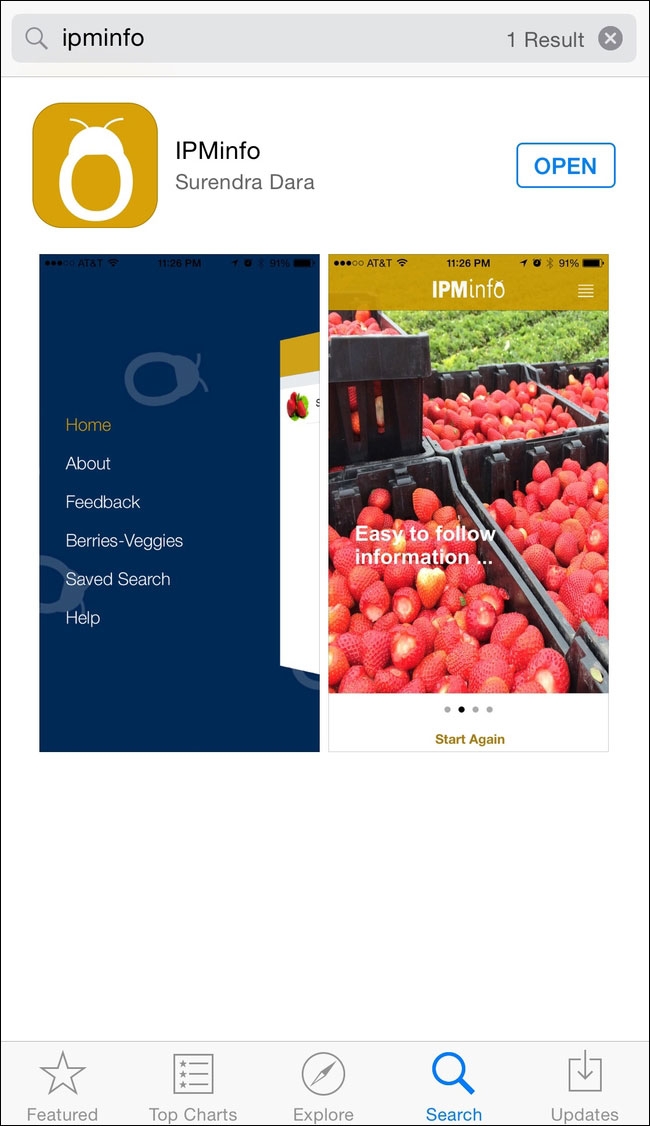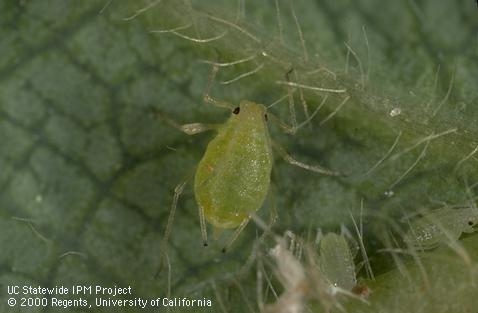
Extending research information is an important part of UC ANR Cooperative Extension. As communication technology is advancing every day, using modern channels of communication are important for successfully reaching out to growers, pest control advisers (PCAs), and other key players of the agriculture industry. Traditional newsletters (Central Coast Agriculture Highlights), blogs (Strawberries and Vegetables and Pest News), Facebook, Twitter (@calstrawberries and @calveggies), Tumblr, and online repositories of meeting handouts and presentations are some of the tools that play a critical role in making important information about the Central Coast strawberry and vegetable extension program readily available to the agricultural industry. The popularity of smartphones has made this information even easier to access.
Smartphone applications are becoming popular in agriculture to provide information and for decisionmaking. However, because there were no such applications to help California strawberry and vegetable growers, IPMinfo was developed. The first version of the app was released in December 2014 and an updated version was released in April 2015.
Growers can find information on invertebrate pests, including as aphids, cyclamen mite, greenhouse whitefly, lygus bug, spider mite, and western flower thrips. Diseases include angular leaf spot, anthracnose, botrytis fruit rot, charcoal rot, common leaf spot, fusarium wilt, leaf blotch and petiole blight, leather rot, mucor fruit rot, phytophthora crown rot, powdery mildew, red stele, rhizopus fruit rot, verticillium wilt, and viral decline. Each pest entry has information on biology, damage symptoms, and management options with associated photos. Links provided in the management section will take the user to the UC IPM website for more detailed information, especially about various control options.
To download the app on iPhones, go to the App Store and search for IPMinfo.
Author: Surendra Dara, UC ANR Cooperative Extension advisor, San Luis Obispo and Ventura counties
